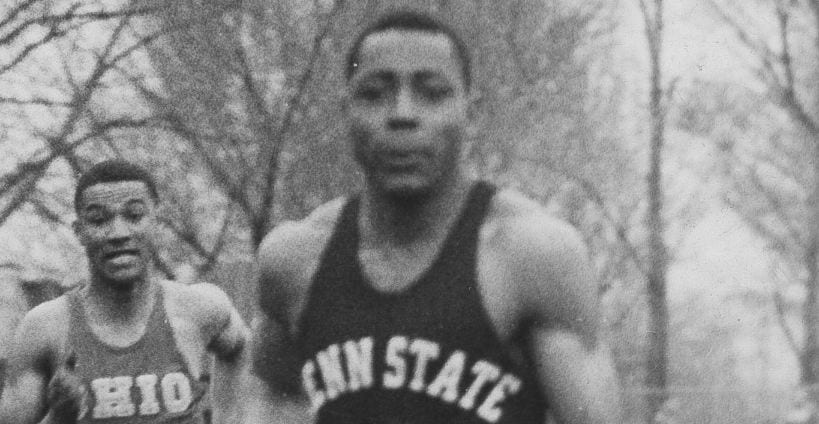- NUMBER OF PENN STATERS COMPETING: 7
- NUMBER OF PENN STATERS IN ALL ROLES: 8
- NUMBER OF OLYMPIC ALTERNATES: 0
The first Olympics after World War II proved a watershed moment for Penn State. Eugene Wettstone traveled to his first Olympics as a coach for the U.S. men’s gymnastics team, bringing along three of his Nittany Lions stars to Great Britain. Seven total athletes with Penn State ties competed in London, though it was one of Pennsylvania’s native sons who made one of the biggest splashes of the entire Olympiad.
Profile: Barney Ewell

Born on February 25, 1918 in Lancaster, Pennsylvania, Henry Norwood “Barney” Ewell had to wait until he turned 30 before finally getting his chance to compete on the Olympic stage. One of the greatest sprinters in American history, Ewell was already heralded as a “stream-lined sprinter… treading the cinders with a majestic step” by the time he was 16 years old. As a high school sensation, Ewell dominated not only the sprints but also hurdles, the shot put, the long jump, and the high jump.
With American entry into World War II still more than a year on the horizon, Ewell enrolled at Penn State in 1940 and quickly emerged as a star on the track and field team. In both 1940 and 1941, Ewell swept the 100-meter and 200-meter events at the NCAA championships. Between 1940 and 1942, he also swept the 100-meter and 200-meter events as well as the long jump at the IC4A track and field meet.
By this point in Ewell’s career, he had already missed out on the opportunity to represent the United States at the 1940 Olympics in Helsinki. The entry of the United States into World War II after December 1941 led Ewell to leave Penn State and enlist for three years in the U.S. Army. By the time he returned to Penn State, Ewell had captured further AAU national titles and proved he was still formidable on the track.
At the 1948 qualifiers for the U.S. Olympic team, Ewell ran the 100-meter race in a world record-tying 10.2 seconds. Ewell also qualified for the 200-meter race and was named to the 4×100-meter relay team. In London, the “Lancaster Flash” celebrated prematurely in the 100-meter final as countryman Harrison Dillard pipped Ewell at the finish line. Another American, Mel Patton, edged out Ewell in the 200-meter final.
With two silver medals already around his 30-year-old neck, Ewell finally claimed a gold in the relay final. Originally disqualified by judges that ruled Ewell had passed the baton to his teammate outside the handoff zone, video reviewers reversed the decision three days later and awarded the Americans the gold medal.
Ewell returned to Pennsylvania a hero, a gold and two silver medals attesting to the lasting prowess of a sprinter who lost two opportunities in his prime to compete for Olympic glory. Among Olympic athletes who competed for Penn State, Ewell remains the most decorated Olympian of the bunch heading into the 2021 Tokyo Olympics.
SOURCES AND ADDITIONAL READING
- George C. Crudden, Jr., “The Observer,” Sunday News (Lancaster, PA), June 10, 1934, 8.
- Darryl B. Daisey, “Barney Ewell,” African American Chronicles: Black History at Penn State, 2010, https://www.blackhistory.psu.edu/timeline/barney_ewell_medals_in_the_london_olympics.
- Joseph Durso, “Barney Ewell, 78, Top Sprinter; Won Gold in Postwar Olympics,” New York Times, April 5, 1996, B8
- Breaking Through: The Barney Ewell Story, directed by Jeremiah Miller (2019; Lancaster, PA: McCaskey Alumni Association, 2018), YouTube.
